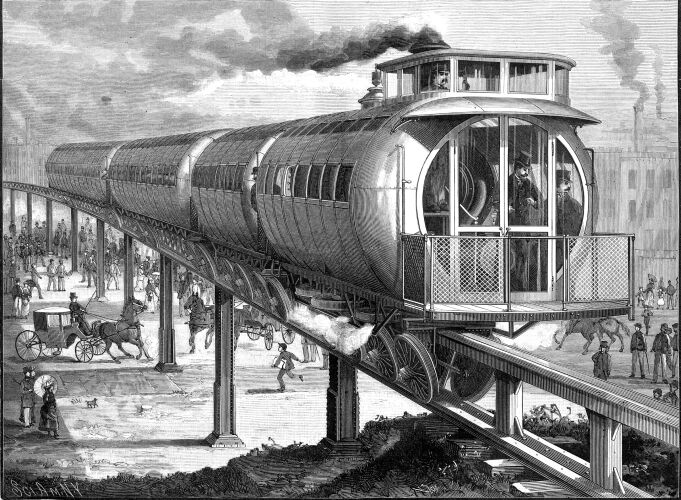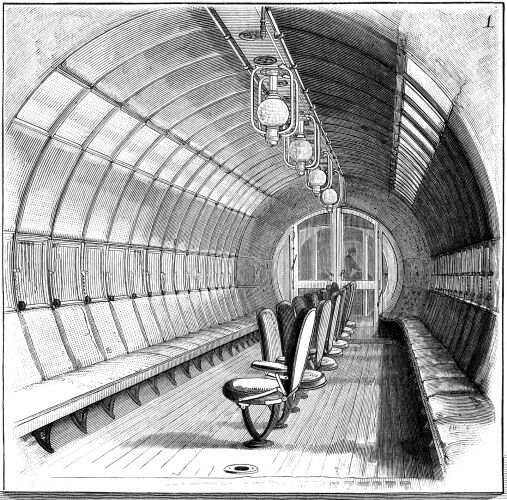
In 1873, Captain J.V. Meigs patented a surprisingly advanced steam-powered monorail that he hoped could serve Boston. It followed a pair of rails set one above the other, thus requiring only a single line of supports, and it burned anthracite, to reduce smoke in city streets.
Each cylindrical car, shaped to reduce wind resistance, contained 52 revolving seats and was completely upholstered. Engineer Francis Galloupe wrote, “If it were ever desirable, one would become more easily reconciled to rolling down an embankment in one of these cars than in that of any other known form, for the entire absence of sharp corners and salient points is noticeable.”
A 227-foot demonstration line in East Cambridge carried thousands of curious riders 14 feet above Bridge Street at up to 20 mph, but in 1887 a fire, possibly started by a competing streetcar business, destroyed most of Meigs’ car shed. He wrote, “‘the most magnificent car ever built’ was melted down by the furnace into which it was thrust. Its metal plates were melted down and the little wood and upholstering burned out.” He fought on for a few more years, ran out of money, and quit.
Here’s his 1887 description of the project.

